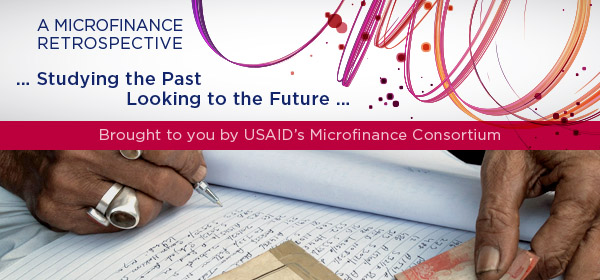Studying the Past, Looking to the Future: Getting Private Capital into the Hands of Those Who Need it Most

Getting Private Capital into the Hands of Those Who Need it Most
We know that part of the solution to tackling extreme poverty is helping micro and small enterprises and entrepreneurs access the financing they need to grow their businesses. USAID has long been a champion of facilitating this access, particularly in mobilizing financing from the private sector.
USAID’s ability to mobilize and drive private capital toward underserved entrepreneurs significantly strengthened in 1999, when Congress authorized the Agency to provide partial credit guarantees through the Development Credit Authority (DCA). This authority enabled USAID to mobilize substantial amounts of private capital from commercial banks, microfinance institutions (MFIs) and other financial intermediaries at a fraction of the cost of providing the same capital through traditional USAID grants and contracts. Under a DCA guarantee, investors lend their own funds with the assurance that USAID will cover 50 cents of every dollar of principal lost in the event of a default.
There are two ways in which DCA increases capital flow to the microfinance sector. First, USAID’s DCA is used to guarantee loans from banks and investment funds to microfinance institutions, increasing MFI lending capital, and secondly MFIs themselves use DCA to guarantee their loan portfolios. By sharing the risk, DCAs increase lending in underserved markets and allow lenders to explore new financial products and services.
Since the establishment of DCA, more than 125,000 microfinance loans have been backed by USAID-guaranteed loans. In all, USAID implemented 155 credit guarantees, which made available up to $839 million in private sector lending for MFIs and microenterprises. Through evaluations, we know most= financial service providers changed their perception of the riskiness of the microenterprise sector while lending under the guarantee and continued lending on their own after the guarantee expired.
Our guarantees are not only designed to channel capital from banks to MFIs or underserved borrowers, they have also allowed other financial and business service providers to deepen and expand their offerings important to microenterprises.
As part of the $103 million in private capital DCA guarantees unlocked for MFIs and small enterprises in the past year, for example, USAID designed its first-ever leasing portfolio guarantee in Senegal. This $5.6 million transaction with Locafrique, a private leasing company, is enabling smallholder farmers and agribusinesses to lease tractors and other machinery to improve productivity.
In addition to capital and machinery, smallholder farmers also need affordable crop insurance. So in Kenya, USAID established its first guarantee that was tied to agriculture insurance. The $2.5 million loan portfolio guarantee established with Rafiki DTM tests the assumption that index-based agriculture insurance can serve as a market-based solution to address lenders’ concerns regarding smallholder agriculture credit risk. Also in Kenya, USAID created its first re-guarantee to increase the availability of longer-term capital and therefore longer-term loans. This re-guarantee of the African Guarantee Fund’s $12 million bond guarantee of Jamii Bora Bank will increase entrepreneurs’ access to longer-term credit, while deepening Kenya’s financial markets.
As the financing needs of microenterprises and their consumers continue to evolve, we need to evolve with them. While banks and MFIs will always be core partners in our efforts to get private capital downstream to such borrowers, we will also continue to pursue opportunities to partner with other non-traditional partners – like insurers and leasing companies – who are providing the next generation of financial services to these borrowers. To this end, we are currently working on a transaction to guarantee financing from global impact investors to manufacturers and distributors of household technologies (e.g., cook stoves, water filtration systems, solar power units) to bottom of the pyramid consumers.& We are also looking to support the mobile payments systems those consumers could use to pay for those technologies and the services that come with them.
Finally, as we continue to support new product development targeting of microenterprises and MFIs, we are constantly looking for new and more accurate ways to understand and measure impact. This is why we are experimenting with how to collect real-time data on access to finance through countrywide mobile surveys. DCA is using the results, obtained in just days, to inform development of new guarantee products while tracking the results, at the borrower level, of entrepreneurs receiving guaranteed loans compared with entrepreneurs who received non-guaranteed loans, or no commercial lending at all.
Watch this video about how the Development Credit Authority Works:

